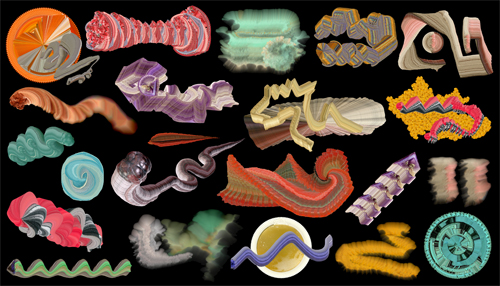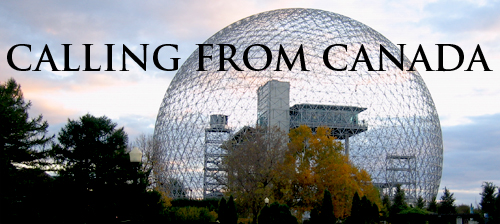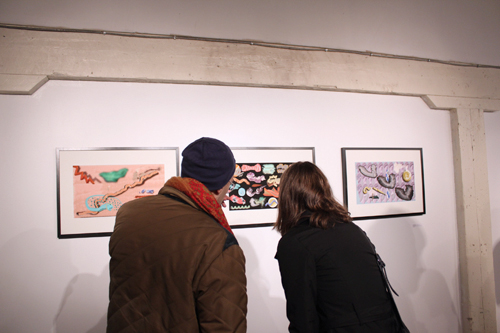The first really noticeable thing about new media artist Tyson Parks’s digital paintings is their fostering of tension between organic and synthetic elements. Images of readymades provide the tip of the paintbrush, and its stroke is the paint that traces across the canvas. He purposefully maintains the tension, too, by restraining from trying to make the digital trace appear like real, physical paint. But at the same time, Parks’s paintings are a new conceptualization across mediums. Parks makes his paintings using a combination of computer hardware and software that he’s designed, a setup he has appropriated from his practice as an electronic music producer, computer programmer, and video artist. He re-imagines the brush, the paint, the canvas. Parks overturns tradition with his technological approach to painting—embracing VDMX over oils, appropriated photo images of readymades over still-lifes, and computer screens over canvasses. There is no easy congruence of form and content in art, and I doubt that the Montréal-based artist’s paintings are an attempt to achieve that congruence completely. In one sense, these paintings embody a nod to formal conditions, and in another sense, there is an obvious aversion to traditional material conditions, while still referring to the history of painting.

Tyson Parks, "Composition #3," 2011. Gesture-modulated video-feedback painting, archival inkjet print. Courtesy the artist.
Parks’s practice, he says, continues from Wassily Kandinsky’s formal theories relating abstract painting to music. For Kandinsky, “the point is temporally the briefest form,” a complex and sharply-defined unit. The point takes on the character of a single sound, and quantitatively, this creates a composition pictorially and audibly. For Kandinsky, visual elements are likened to musical elements of orchestration. This approach is different from “visual music,” an artistic tradition practiced by Norman McLaren, Oscar Fischinger, and Len Lye, whereby music is visually interpreted and (often quite literally) represented in film and video works. With visual music, lines, colors and shapes correspond with music, appearing to move and react to sound like perfectly choreographed dancers. Kandinsky’s interest on the other hand, lay in developing visual abstractions analogous to, and in conversation with, the structure, form, and style of music composition.

Tyson Parks, "Taxonomy Of Strokes On Black," 2011. Gesture-modulated video-feedback painting, archival inkjet print. Courtesy the artist.
Kandinsky’s theories, published one-hundred years ago, may now be discounted for their heavy-handed spiritualism, yet they resonate with Parks for a different reason. Kandinsky’s assertion that the line is the product of force, velocity, gesture is an approach appropriated by Parks’ work with hardware and software in creating and performing digital music. On the heels of presenting a work called Wave Painter, an interactive live video painting installation Parks premiered at the Candadian Centre for Architecture, Parks is now working on an installation that will invite users to digitally calibrate their bodies in order to paint on a large screen at the Societé des Arts Technologiques, followed by a live visual performance at MUTEK. He will also participate in the Montréal-installment of BYOB (Bring Your Own Beamer) with collaborators in BOCA, an online gallery for net artists to which he belongs. On the occasion of a recent exhibition showing his works in Montréal, I interviewed my friend, new media artist, Tyson Parks, about his paintings and the process entailed in making them.
Raji Sohal: How do you create your digital paintings?
Tyson Parks: I use basic tools from electronic music production, which are typically used for real-time modulation of synthesis parameters, which I use in combination with video feedback.
RS: How do you use video feedback as a tool?
TP: Video feedback is a technique that has its place in video art history – it was re-appropriated by video artists from amplified music performance (Jimi Hendrix would be a popular example of this use). In physical practice, the video feedback technique involves plugging the live output of a video camera into a video monitor or television and then pointing the camera at that same monitor, creating a ‘video feedback loop’ that yields an elegantly frenetic trace-effect across the screen. When reproducing this effect within software with pixel perfect alignment of feedback signals, I discovered that this effect fundamentally transforms a video stream or a still image into a digital paint brush and the computer screen (or multiple ones!) into a dynamic canvas. I use feedback as the intersection between the brush and the canvas it transforms. So I paint with feedback, which is itself – contrary to what some may think – an imprecise ‘material’ with frenetic qualities. “Mastering” its modulation is a commitment to experimentation and practice of technique.

Tyson Parks, "Composition #5," 2011. Gesture-modulated video-feedback painting, archival inkjet print. Courtesy the artist.
RS: Can you elaborate on how you use the same techniques as in your music production to paint digitally?
TP: I modulate parameters within the video feedback network to essentially animate the canvas in ways that would not be possible with a physical canvas. I do this using low frequency oscillators, envelopes, and step sequencers, as well as with MIDI hardware controllers. This means that I paint using two hands; one to paint (using a pen-like instrument on a Wacom tablet), while the other turns knobs or pushes faders to effect the gesture further. Sometimes I may even use an effects foot pedal! In producing music, I use recorded found sounds and take samples from library records. In painting, I also sample – using images to create brushes. I think of my brushes as readymades but I try to visually obfuscate them so they do not clearly represent the original object any longer.
RS: Your paintings are hard to classify. It’s tempting to call them eye candy or merely expressive for their vibrant colors and in some playful scientific-like categorization of distinct shapes, but the conceptual dimension stresses the virtue of the radical blending of digital disciplines – music production, software programming, and hardware tweaking – at work in dialogue with art history. Where does the aesthetic come from?
TP: The aesthetic comes from two areas. One, my work is a revisitation of non-objective painting philosophies, such as those by Wassily Kandinsky, who published formal theories on affinities between painting and music. He wrote about abstract painting in relation to music that likened visual elements of line, color, and shape to musical elements of timbre, pitch, amplitude, and orchestration. Both in respect for, and as a critique of, these interesting but dated theories, I have approached the canvas as a space to inject new visual aesthetics based upon my understanding of contemporary music and composition theory, as well as my practice as a contemporary electronic music producer. Secondly, experimentation with materials is important for me. In this case, I experimented with the possibilities of programming my own software and physical interface for digital painting. Through this process of re-inventing the digital paintbrush and digital canvas for myself, I have found myself appropriating many ideas from my music composition process. While exploring the potential of the new tools I’ve created, I’ve found myself fascinated by the simple act and visual result of creating a single stroke. Just recently, I’ve discovered the work of James Nares and can liken his single-stroke fascination within the physical paint medium after re-inventing the physical paintbrush for himself to my own fascination after now having re-invented the digital paintbrush for myself.
RS: You advance the possibilities of the discipline in a way Kandinsky would probably never have imagined! What do you think he’d think of your digital paintings?
TP: I think while he may appreciate some of the forms and compositions in my paintings, it’s quite possible that I may have failed in the application of his color theories. His color theory intimidates me and I have purposefully saved that investigation for later! To be honest, I actually find Kandisnky’s color theory to be problematic because it depends too heavily upon associative color experience and often veers into audacious phenomenological assertions without supporting evidence. At some point in Concerning the Spiritual in Art, he vaguely describes a certain intermixture of yellow with blue that he claims is parallel to “violent raving lunacy.”






Pingback: Owl City » Calling from Canada | An Interview with Tyson Parks | Art21 Blog
Pingback: We Find Wildness